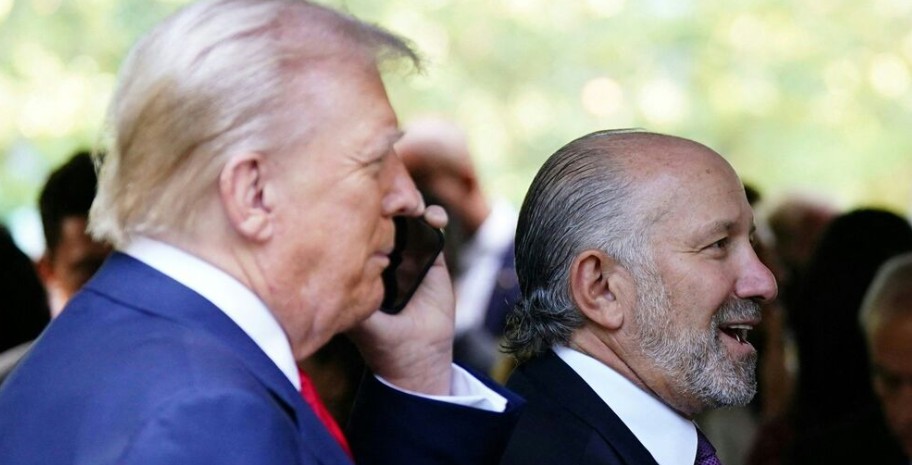by Dennis Crouch
The Trump administration is reportedly considering a radical transformation of the US patent system that would replace the current flat-fee maintenance structure with a percentage-based “property tax” on patent value, according to a recent Wall Street Journal report. Howard Lutnick and his Commerce Department team are discussing a tax of between 1% and 5% of overall patent value annually, a shift that could dramatically increase costs for certain patent holders while making the US an international anomaly among major patent systems. The report led to market drops – especially in biotech.


Under the current system established by the Patent Act, patent holders pay three flat maintenance fees: at 3.5 years, 7.5 years, and 11.5 years after patent issuance. The final fee is the largest (currently $8,280), and almost half of all patents are abandoned without paying this final fee. For patents that have become virtually worthless by their 11.5-year mark, owners might actually prefer a value-based tax (2% of nothing…). However, any new proposal would likely be additional to existing maintenance fees rather than a replacement.
Implementation Strategy: Targeting High-Value Patents
One potential approach would focus revenue collection on patents that are demonstrably high-value, using existing public mechanisms for identification. This targeted system could include:
Pharmaceutical and Regulatory Patents:
- Orange Book-listed pharmaceutical patents
- Patents covering products in regulated industries where regulatory filings create discoverable connections between patents and revenue-generating products
Commercial Indicators:
- Patents sold or used as collateral
- Patents actively being litigated or licensed for substantial royalties
- Patents covering successful commercial products (identifiable through patent marking)
- Standards-essential patents declared to standard-setting organizations
- Patents cited in SEC filings as material intellectual property assets
Such a targeted approach could leverage existing IRS enforcement mechanisms, making implementation more feasible.
According to the WSJ, Commerce Secretary Howard Lutnick is reportedly championing this the fee as part of broader efforts to shrink the government’s budget deficit, with USPTO officials providing Commerce leaders draft proposals and financial models for implementation. In other words, this would not be used directly to improve the patent system or support innovation policy. The change would make the US an international anomaly, as no major patent system currently employs value-based maintenance fees.
Historical Origins of Value-Based Patent Filtering Through Fees
The concept of using escalating fees to filter patents by value has deep historical roots predating the modern patent system. The multi-payment system was part of the British patent laws in the 1800s, and apparently only 11% were maintained through to their statutory 14 year term. But, that was seen as beneficial — with the idea that escalating fees systematically weed out relatively worthless patents. In 1958, Congress hired Prof. Fritz Machlup to conduct a report on the patent system — as part of that, the report noted that renewal fees in other countries offered “insignificant” fiscal function, but still served the important weeding-out purpose. Congress eventually implemented maintenance fees in the early 1980s and today they are significant – funding almost half of USPTO patent operations.
James Bessen and Brian Love have argued for using higher maintenance fees as a Pigovian tool to force abandonment of “trivial” patents that might later be weaponized by patent trolls. They propose restructuring patent renewal fees to internalize the social costs of patents and induce expiration of low-value patents before they fall into the hands of non-practicing entities. Their approach would involve steeply escalating fees in later years of the patent term, far above current U.S. fee schedules, so that only patentees who genuinely derive significant value from patents would pay to keep them in force. Although this is not the purpose of the DOC proposal it may be the effect.
The proposed value-based fee system would fundamentally undermine decades of effort to establish the USPTO as a largely independent self-funded agency. The current maintenance fee structure reflects hard-fought battles over USPTO funding that have persisted since the 1980s. Under 35 U.S.C. § 42, Congress established that USPTO fees should recover the aggregate cost of patent and trademark operations, but for years Congress diverted collected fees to other government purposes rather than allowing the USPTO to retain and use them for patent operations. This “fee diversion” problem became a major sticking point for the patent system with about $1 billion in USPTO fees diverted to general government operations over past 30 years.
Ultimately, a value-based maintenance fee system would likely create perverse incentives to reduce patent filings. Companies might rationally choose to maintain trade secret protection rather than seek patent protection, particularly for high-value inventions that would trigger substantial annual fees.
#TrumpLutnick #Patent #Tax #Trading #Innovation #Policy #Deficit #Reduction